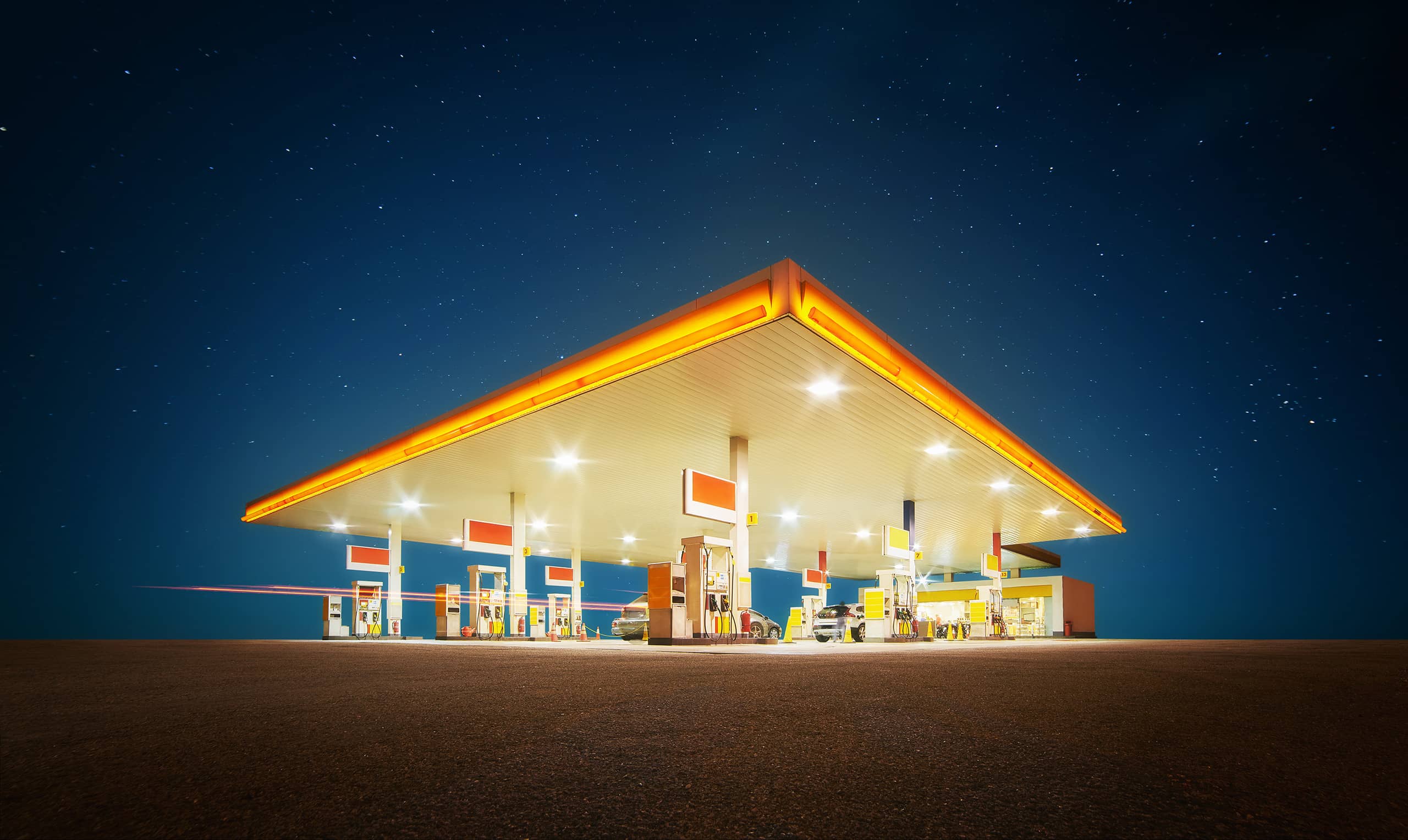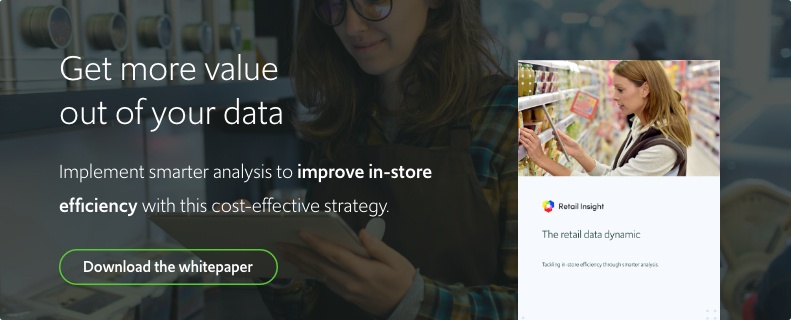Roadside convenience retail: technology and data insights

- 6 minute read
- Paul Boyle
The last year has seen dramatic shifts in food and grocery retail. And the rate of change shows no signs of slowing down. However, there are some common truths that exist no matter the time or channel – features that usually indicate success.
When it comes to roadside convenience retail, there are three things that will be vital to its continued success over the next five years as the offer expands beyond fuel, tobacco, confectionery, and soft drinks. These are:
- Growth and optimization of space and range
- Cost leadership through sourcing and scale
- The location of stores to service an even broader set of customer needs
To achieve prolonged structural success, I predict that roadside retailers will look for opportunities to pick up the pace on M&A opportunities. They will look to drive scale, sourcing, and supply chain efficiencies. At the same time, they will do more to understand their shoppers and operations through the intelligent application of retail data analytics.
Business instrumentation
There is no doubt that roadside retailers across the globe are recognizing the increasingly blurred channels within fuel retail. The convenience retail offering is evolving towards food (particularly fresh food) where supply chain and digital expertise are critically important.
I predict that, just as we have seen in big box retail, the increased adoption of data-driven retail technology will fuel success. Very few winning businesses have yet to incorporate full data instrumentation across their operations. And retailers such as Walmart, Woolworths, Tesco, and Target have made data a core focus.
Once integrated, the signals provide insight into changing consumer behaviors. It allows them to evolve and enhance the customer proposition, while continuously monitoring and driving profitability at the operational level.
From membership to personalization
Fuel loyalty cards have been around for a long time. But we are now seeing them shift from transactional points-based models to the type of data-driven loyalty marketing pioneered by big box retailers. For instance, Tesco’s game-changing Clubcard loyalty program. Fuel savings will likely remain the top loyalty currency in the near term. But the consumer and behavioral insight gleaned will enable retailers to deliver a tailored experience in the long term.
Making sense of near-real-time customer data, intelligent mathematical models, artificial intelligence, and machine learning techniques can help brands offer highly personalized and relevant recommendations to each shopper. They provide an even more personalized experience by harnessing the growing penetration of mobile apps. These pave the way for a new generation of offer capabilities that use geo-location and proximity identification to deliver the right communication to the right person at the right time.
The impact of COVID-19 has reshaped how customers shop. We have seen a transformation in the demand for online – not only with Amazon and Walmart, but across many top convenience retailers. 7-Eleven now offers its products to U.S. customers across nine different digital platforms. They expanded significantly during the early months of the pandemic, and this helped them deliver a 346% increase in convenience store orders in 2020, according to Edison Trends.
Membership apps and loyalty programs also help convenience retailers make life easier for their customers. As shopping habits shift, it is not only important to know what customers want, but how they want it.
Apps can drive curbside delivery and click-and-collect services across a broad range of shopping missions, offering more choice with arguably the most convenient of all delivery options. There is also the opportunity to increase traffic for fuel and top-up shops, as Walmart has seen through the innovations made in online grocery pickup over the past five years.
These developments will not only have huge benefits for the customer, but also masses of data to mine for valuable insight every day. For example, who shops at the store, why they decide to shop there, and whether they will come back for more. They will help convenience retailers win more customers with a meaningful and compelling offer, and, once they are in, the instrumentation helps them connect all their interactions with the business over time. By harnessing the data effectively, they can build a competitive moat that drives increased loyalty and ‘stickiness’ for the long term.
Focus on store estate levers
Shifts in demand, basket size, customer requirements, and complementary offers have driven a fundamental change in service. It is now vitally important that retailers use and manage space and range as effectively as possible across their stores. Today’s stores are strategic mobility hubs; a set of leverageable assets.
Big box retailers have realized that they must adapt their retail store layout and range to capture new shopper missions as they emerge. And the same is true for convenience retailers . Dynamic, data-driven space optimization capabilities will be a critical component in the convenience retail technology stack. Retailers must focus not only on delivering the right range in the right space, but managing the change required to address shopper needs on a more fluid basis.
Gradual automation
There is no question that automation will arrive in every labor-heavy industry. As labor costs grow, efficiencies in store operations and replenishment become ever more important. According to the NACS State of the Industry Report 2019, the average U.S. convenience store has 6.6 full-time employees attending to customers, overseeing third-party concessions, replenishing shelves, and preparing food. It is right to assume that retailers will carefully monitor these costs going forward.
As English philosopher Alfred North Whitehead said, “Civilization advances by extending the number of important operations which we can perform without thinking about them." Retailers should therefore embrace retail automation technologies. . Employees should be free to provide services and sell to their customers. We think about this in the same way Boston Consulting Group does when they describe the Bionic Company.
Despite retailers such as Circle K and Ahold exploring unstaffed stores, I predict a gradual evolution of retail automation over the next five years. We are still some way off from the mass deployment of commercially and operationally viable unstaffed stores.
Retail inventory management
With all this future thinking, it is important to remember that good shopkeeping is, and always has been, about good retail inventory management. As Raman and Fisher said in their 2010 book, The New Science of Retailing:
“Inventory… is every retailer’s nightmare. Carry too much, and you are left with unwanted surpluses and margin-killing markdowns. Carry too little, and you face stockouts, missed sales, and unhappy customers who end up shopping elsewhere.”
We have already seen the impact focusing on the fundamentals can have on major retailers. One large retailer consistently improved product availability by 0.5% every year by adopting a demand-driven model that used a simple execution process. Each percentage point represents 1% of comparable sales growth. As one executive said, the benefits are “virtually endless.”
For convenience retailers, it is essential to invest in item-level inventory accuracy – supported by tools and applications that manage forecasting, availability, and waste. This will create meaningful and sustainable returns on investment.
I predict that we will see significant investment in the digitization of the upstream and downstream supply chain processes with integration and connection at its heart. Excellence in execution is not just about customer interactivity in-store, but also the interactivity and loops of communication between enterprise and operative.
A winning proposition
The pandemic has demonstrated the resilience of the convenience and roadside retail model. The diversity of the offer from fuel and grocery to food and restaurants has enabled it to adapt to adverse trading conditions – dialing up one aspect of the business while dialing down another.
Convenience retail has the structural tailwinds in its favor. The potential is there for enormous scale through M&A and the increasing role of technological innovation will drive consumer understanding, improve personalization, and increase operational profitability. Together, these present huge opportunities for roadside retailers to win in the next five years and beyond
This extract originally featured in the fifth 'Shape of Food Retailing in the New Normal' paper dedicated to 'Roadside Retail’.
Get in touch
Written by Paul Boyle
Paul, a Master's graduate in Engineering, became CEO of Retail Insight in 2011 having previously served as COO since the business was founded in 2005. He enjoys everything about Retail Insight; our people, products, and partners. Prior to Retail Insight, Paul worked at P&G and HJ Heinz in Commercial and Strategy.
